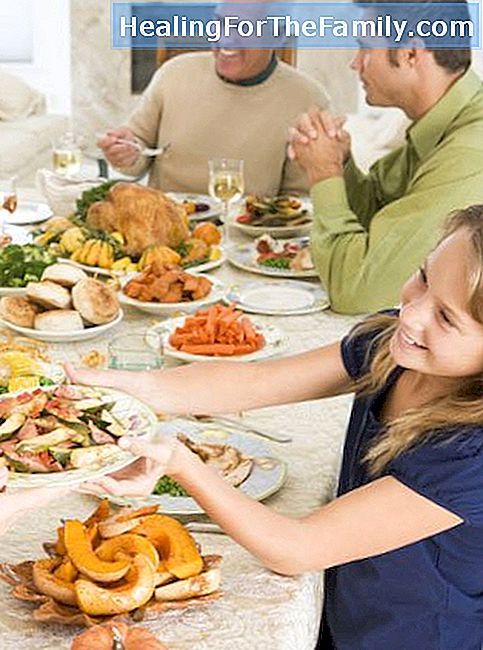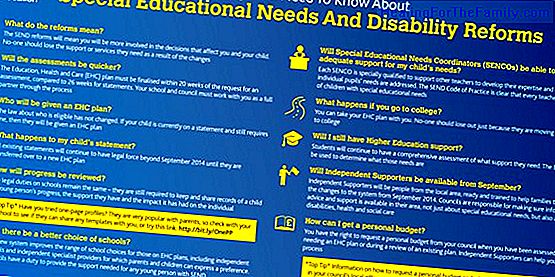Answers to some questions about children's allergies
Children's allergies increase over the years. There are many types of allergy: pollen. to the sun, to mites, to a food ... Each of them develops different symptoms and needs a specific treatment. María Niella , president of Histasan, Madrilenian Association of Food Allergies (Spain), answers some qu
Children's allergies increase over the years. There are many types of allergy: pollen. to the sun, to mites, to a food ... Each of them develops different symptoms and needs a specific treatment.
María Niella, president ofHistasan, Madrilenian Association of Food Allergies (Spain), answers some questions about general doubts about the topic of childhood allergies.
Questions and answers about child allergies

What care should parents have when buying food products for their children?
The most difficult thing in the day to day of the allergic and their families is what seems simpler: eliminate the food that causes the allergy from the diet. In practice, hidden allergens should be avoided, especially in processed, packaged and frozen foods.
Sometimes we parents go crazy to "interpret" the labels. The Labeling Law requires that the following 14 allergens appear on labels: milk, eggs, cereals, nuts, peanuts, fish, molluscs, crustaceans, soybeans, celery, mustard, sesame, lupins and sulfites, but they do not always appear as "milk or egg", but with names that are difficult to identify or remember (casein, lysozyme) or impossible codes (E-numbers, for example). In addition, it must be borne in mind that not only food products may contain allergens, but also cosmetics, school supplies and handicrafts, medicines and other products of daily use.
To all this we must add that there are few safe brands, not available in all the usual points of sale (supermarkets, hypermarkets, neighborhood stores), sometimes only in specialized stores and with considerably higher prices than counterparts for non-allergic people .
Are allergic children as protected as non-allergic children when they go to day care, schools and lunchrooms?
Regarding the school canteens, the regulations in the Community of Madrid foresee the existence of menus adapted to specific dietary needs (intolerances, allergies, metabolic disorders, etc.). However, in practice, allergy sufferers may be denied their applications because the center or the company awarded the service alleges organizational or other problems.
We face ignorance of what food allergies are on the part of the teaching and auxiliary staff of educational centers and how to treat them, especially in cases of emergency. The majority of the families, in the absence of security, choose not to use the dining room service, and they have to endure situations that are clearly discriminatory and not very inclusive (the allergic child eats only at a separate table, or has to bring the home).
Many mothers stop working so they can feed their allergic children at home. The most risky moments that generate the most stress for families are extracurricular activities, camps and various celebrations (allergy sufferers often do not take part in them). As we see we face not only a medical problem, but also social and pedagogical.
Currently, there is a new regulation of the Community of Madrid, which indicates the need for a cooling and heating system (refrigerator and microwave) different and exclusively for allergy sufferers who bring their food from home, in case they do not You can guarantee the offer of a menu suited to your needs.
What do the latest statistics on food allergies say?
In Europe, there are 2 percent of adults who are allergic to food and up to 8 percent of children, of whom 65 percent are between 0 and 5 years old. Regarding the importance of genetic factor se, it is considered that if one of the parents suffers some type of allergy, their children have a 45 percent probability of suffering it too, and the percentage increases up to 75-80 percent in case both parents are allergic .These combined data make us predict that the incidence of allergies in general and food allergies in particular, could reach 25 percent in a generation. Of all the allergic reactions produced by food less than 2 percent are very serious (anaphylactic shock).
Which foods cause more cases of allergy?
In Spain, the foods that provoke more cases of allergies are, in children,
milk, eggs and in adults fruits (specifically melon and peach) and fish and seafood. In Europe, they produce numerous reactions, apples and celery. In the United States, allergy to peanuts prevails and in South America to fruits such as pineapple. Finally, in terms of positive figures, milk allergies are mostly exceeded (in 80% of cases), somewhat less in eggs (55%) and more rarely in fish and fruits (15%). ). For more information:
Madrid Association of Food Allergies
HISTASAN.Email for contact: [email protected]
Helpline: 91 331 38 99 (L, X, V from 12: 00-14: 00 h)












